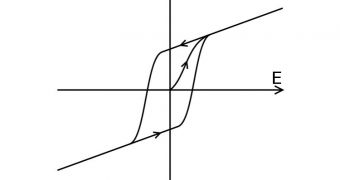Northwestern University experts announce the development of a new class of organic materials that are inexpensive and easy to produce. These compounds display a property called ferroelectricity, which could until now only be obtained in expensive, difficult-to-produce materials.
The innovation promises to bring ferroelectric materials into mainstream research. They can now be produced from two simple chemicals in a very straightforward process, which means that more teams will be able to work with this class of materials from now on.
This advancement could lead to improvements in cloud computing, in computer and cellphone memories, as well as to the development of new sensing devices, novel nanoelectronics, and new generations of solar energy systems.
The NU approach uses just two small, simple and inexpensive organic molecules, which are strongly attracted to each other. When put together, they self-assemble in very long crystalline structures, which display ferroelectric properties.
Details of the new production method were published in the August 23 issue of the top journal Nature. The senior author of the paper was NU Board of Trustees professor of chemistry, Samuel I. Stupp, who is also a professor of materials science, engineering and medicine at the university.
“This work will serve as a guide for designing these materials and using ferroelectricity in new ways. Our molecular design enables us to invent a nearly infinite library of ferroelectric materials,” he says.
“The material’s behavior is complex, but the superstructure is simple. It is the superstructure that gives the material its desirable properties,” NU Weinberg College of Arts and Sciences Board of Trustees professor of chemistry, Sir Fraser Stoddart, adds.
The reason why ferroelectric materials are so sought-for is that they exhibit a spontaneous electric polarization. This means that one side is positively charged, while the other carries a negative charge. This polarization can be reversed by applying an electrical field, such as from a battery.
Each orientation could be made to correspond to a 1 or a 0. This makes this class of materials very appealing to computer engineers, who are used to working with compounds that store data in this manner.
If ferroelectrics make their way into computer memories, then the latter will consume less power, last longer and capture data faster than existing memory technologies.

 14 DAY TRIAL //
14 DAY TRIAL //